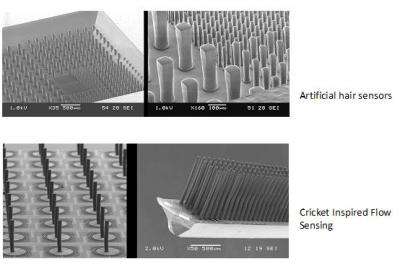Researchers use living systems as a guide to develop advanced technologies

How should we respond to technologies around us that are inefficient, wasteful, pollute our environment, and overburden our health care system?
In their latest three three volume "Handbook of Biomimetics and Bioinspiration" published with World Scientific, renowned researcher Dr Jabbari and his co-editors provide answers to this question.
Nature has evolved over millions of years to create structures with amazing complexity. Nowhere this complexity is more apparent than in plants and animals: mimicking non-sticking of lotus leaves to produce self-cleaning devices, stickiness of gecko's feet for space walking, water strider's walking on water to build aquatic reconnaissance microrobots, mimicking laminated structure of the skin to generate advanced membranes for water purification, anti-reflectivity of cicada's wings to build improve medical imaging systems, mimicking self-healing of earthworms to make tires that repair themselves, desert beetle's water collecting ability to design water storage systems in dry and hot climates, and mimicking uneven wetting of butterfly wings to trigger motion in a particular direction.
Nature-driven design that mimics the hierarchical complexity of biological systems leads to the development of more reliable miniaturized and compact devices that perform multiple tasks. These include muscle mimetic actuators and robots, algae mimetic photoreception devices, sea star mimetic light sensing, ocellus mimetic optical devices, cell membrane mimetic nanochannels, nerve tissue mimetic sensory systems, olfactory mimetic odor sensing systems, cochlea mimetic acoustic resonators, cilia mimetic microfluidic systems, pyrophilous insect mimetic infrared sensing devices, cricket mimetic flow sensing devices, locust mimetic micro air vehicles, insect mimetic motion sensing, cochlea mimetic hearing aid devices, pigeon mimetic geometric perception, and rat mimetic silent flight systems.
As our ability to observe living systems has expanded from macro to micro and nano scale, our understanding of complex biological systems at different length scales has increased dramatically leading to the development of engineered tissues to improve human health. These include models for bone regeneration, models of muscle tissue that enable the study of cardiac infarction and myopathy, models for differentiation of embryonic stem cells, bioreactors for cultivation of mammalian cells, human lung, liver and heart tissue models, biomimetics constructs for regeneration of soft tissues, and engineered constructs for the regeneration of musculoskeletal and corneal tissues.
"Nature is by far the world's greatest engineer and materials scientist. We can learn from this great source novel technology to develop new materials and devices with a diverse range of applications and to repair and replace human tissue, bone, and organs", said Joel R. Fried from Florida A&M University.
More information:
More information on the Handbook can be found at www.worldscientific.com/worldscibooks/10.1142/8169
Provided by World Scientific Publishing